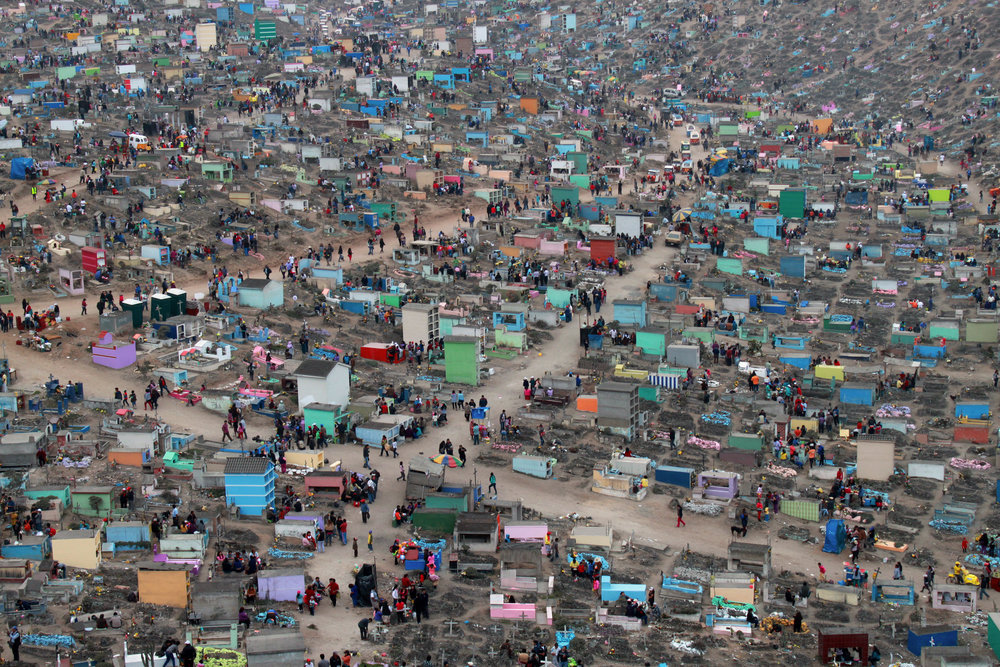A Cemetery Full of Life
Nueva Esperanza Cemetery as informal public space
Eduardo Pelaez (MDes ’19)
Cemeteries are cultural manifestations to remember a deceased relative or friend situated mainly in cold and rigid landscapes. However, the meaning of sadness, coldness, and death flip to celebration, music, and life in one of the biggest and most popular cemeteries in Latin America: The Nueva Esperanza Cemetery. The collective self-construction of the cemetery, the Peruvian Andean traditions, and people’s manifestations on the “Day of the Dead” and other holidays convert this cemetery into a vibrant, colorful, and hectic public space.
Nueva Esperanza – or “New Hope” in English – is an atypical cemetery that began more than fifty years ago in Villa Maria del Triunfo, Lima, Peru. It is a clear manifestation of the waves of immigrants who came from the Peruvian highlands to the coastal capital. In fact, many Andean social and spatial dynamics have brought a special soul and colors to the cemetery. This sprawling cemetery occupies more than 150 acres of arid and steep landscape and contains more than one million tombs. Over time, it has adopted mainly a spontaneous development where the position, structure, material, and nuances of each tomb vary according to the economic progress and dedication of each family. Those developmental and incremental patterns of tombs and mausoleums are associated with the patterns of growth of many informal settlements that originated from basic materials and one-story buildings, evolving into complex configurations, multi-story buildings, colorful wall tiles, and exposed iron bars on the top of the units.
The settlement and cemetery share the same built language, but at different scales. The steep territory, arid land, dust, and unstable paths are not obstacles in the configuration of the whole cemetery. Diffuse limits are part of its DNA where a couple of painted rocks or a small tomb expansion might not create a conflict or litigation with other families. The “low density”, land tenure of families and variable topography facilitate the use of some corridors as public streets, vacant spaces as plazas for meetings and performances, and slopes as bleachers. In addition, each of the few trees of the cemetery is a landmark for commercial activity. In addition, “La Cruz mayor” is also an important landmark for praying and gathering. In a nutshell, those features facilitate the cemetery as a perfect space for convergence.
This setting becomes an informal public space when a wave of people visits the cemetery, especially for the “Day of the Dead”. A new smell of life comes from Nueva Esperanza on November 1st. An overflow of people invade the cemetery, bringing not only candles and flowers, but also traditional food, beers, religious songs, orchestras, Andean music, and dancing to celebrate the remembrance of a loved one. This ritual is charged with tradition, memory, nostalgia and a high amount of celebration. There is no space for loneliness, only for collective celebration, creating a respectful party. In addition, this massive manifestation incentivizes informal economies for cleaning and painting tombs, parking, selling food and beverages, and the blessing of some families by priests. This living territory of mini urban-informality gathers families, sellers, priests, moto-taxi drivers, and musicians on the corners and interstices of the cemetery. Nueva Esperanza is an example where a cemetery becomes a suitable public space where people’s manifestations and traditions bring life, color, and hope.

